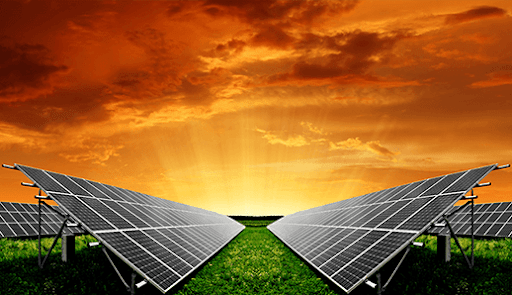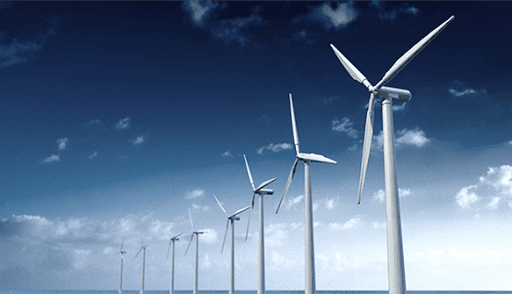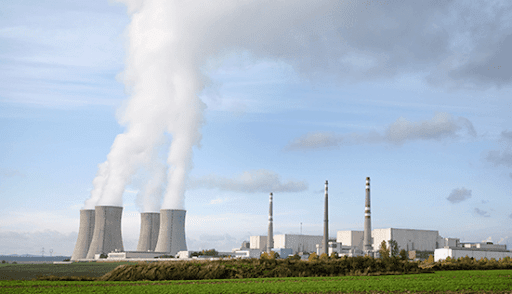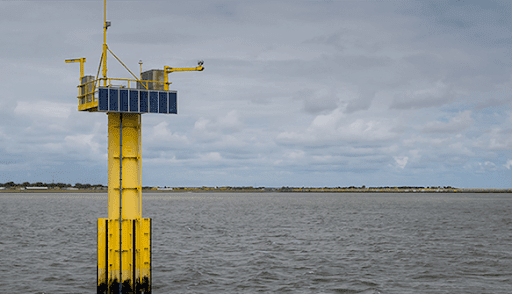Practice Questions & Answers on Mineral and Power Resources for CBSE Class 8 (2025-26)
It is not easy to understand different chapters in Geography. There are different ways in which students can understand various geography concepts, and the easiest way is to use PDFs and worksheets. Chapter 3 in geography in Class 8 is Mineral and Power Resources. In this chapter, students will learn about the naturally occurring substance and other minerals on the earth's surface. In this lesson, students will get to know about topics like what is hydel power, what minerals are, where they are found, their composition, etc. To prepare for these topics effectively, students can take help from different study materials based on the CBSE and Class 8 exam patterns.
To get good marks in tests and exams, students can refer to free minerals and power resources Class 8 worksheets. Such worksheets contain various examples and exercises that will come in handy in students' preparation. As pdfs are easily downloadable and accessible, they are the best way to learn multiple tough subtopics in this chapter.
Access Worksheet for Class 8 Geography Chapter 3 - Mineral and Power Resources
1. What are Minerals?
2. How are minerals formed and can be identified in nature?
3. How can minerals be extracted from nature?
4. What are mining and open-cast mining?
5. How is quarrying done and name some products extracted using the process?
6. Name some places where iron ore, nickel, and copper are found.
7. Name at least two regions that are rich in natural gas resources.
8. Name some industries where minerals are used.
9. Minerals are a non-renewable resource. How can you conserve it?
10. What do you mean by power resources and name their types?
11. What do you mean by conventional resource? Name two conventional resources in nature.
12. What do you mean by fossil fuel and state its importance?
13. Where is petroleum found and how it is extracted?
14. What is natural gas?
15. How hydel power is generated?
16. Why do you think non-conventional sources of energy must be used more than conventional sources?
17. State True or False
Salt and graphite are minerals.
Minerals can be identified on the basis of their properties, color, density, and hardness.
Minerals are renewable resources.
Electricity from coal is called thermal power.
18. What are the advantages and disadvantages of hydel power?
19. Explain the following:
Solar Energy

Solar energy
Wind Energy

Wind energy
Geothermal Energy

Geothermal Energy
Tidal Energy

Tidal energy
20. How is biogas formed?
Answers for Worksheet
1. Minerals are substances that are formed naturally in nature. Any naturally occurring substance that has a chemical composition in it is called Minerals.
2. Minerals are generally formed in different types of geological environments and in different conditions. The formation of minerals is a natural process without any human interference. Now, minerals in nature can be identified on the basis of their colour, properties, characteristics, hardness, density, and smell in some cases.
3. Minerals can be extracted from the Earth’s surface by mining, drilling, and quarrying. These extracting processes are mostly used for extracting metallic minerals from nature.
4. Mining is nothing but the process of taking out minerals from the Earth is called as mining. On the other hand, open-cast mining is also known as open-pit mining and is the activity of taking minerals such as coal from the surface of the ground.
5. Quarrying is the process of digging into the ground for minerals. It is a technique that includes drilling and blasting of rocks. Some products that are extracted using this process are marble, granite, limestone, sandstone, and many more.
6. Some of the places around the world where iron ore, nickel, and copper are found are Europe, Canadian Shield Region, and Australia respectively.
7. Two countries that are rich in natural gas resources are Russia and the United Kingdom.
8. Minerals are very important in today’s world they are used by almost every industry possible. Now, some of the industries where minerals are used are the airline industry, bottling industry, building industry, and many more.
9. Minerals are non-renewable resources i.e., they cannot be made in a very short span. It takes thousands of years for the formation of natural minerals and their concentration of them. The formation rate of such minerals is becoming smaller day by day and the consumption is increasing. Minerals must be recycled in every way possible to conserve them.
10. Power resources are the resources that will never go dry. These resources have been very commonly used for a very long time. Power resources can be categorized into two categories and they are conventional and non-conventional resources.
11. Conventional resources are those resources that are non-renewable in nature. These resources have been in use for a very long time in human history. Some conventional resources are firewood and fossil fuel.
12. Fossil fuel is a natural conventional resource. Fossil fuels are filled with hydrocarbons and they are formed naturally. Such fuels are supplied in about 80 percent of the world for energy. They provide electricity, heat, petroleum, and many more.
13. Petroleum is what keeps our car running and it is found between the layers of rocks and is drilled from oil fields that are mostly located off-shore and in coastal areas. It is drilled from the shores and then they are sent to refineries which are further turned into crude oil and varieties of products are made such as kerosene, petrol, wax, plastics, and many more.
14. Natural gas is a naturally formed gas that contains methane and other alkane gases. It is one of the most important clean energy sources in nature. Such gases are used as fuel in many power sectors to generate electricity.
15. Hydel power is also known as hydroelectricity. To produce hydel power rainwater or river water is stored in dams so they fall from heights. The falling water in such areas falls through pipes that have turbine blades placed at the bottom. Now, the blades turn the generator and produce electricity.
16. Non-conventional sources are non-renewable in nature and will exhaust one day in the future. Moreover, the use of non-conventional energy causes a lot of environmental pollution. Therefore, the need of using conventional sources is highly needed.
17.
True
True
False
True
18. The advantages and disadvantages of hydel power are given in the table below:
Advantages | Disadvantages |
Electricity can be produced at a constant rate and is renewable | The maintenance cost of hydel power dams are high |
The gates used to produce electricity can be shut down if electricity is not needed | People in that part of the region are forcibly removed |
They can last longer | If flooding happens then the failure of dams increases |
The water can again be used for irrigation purposes | A serious geological damage can happen while constructing the dam |
19.
Solar Energy: Solar energy is the heat or light from the sun. Now, this light is collected using a range of technologies such as solar panel and are further used for daily purposes.
Wind Energy: It is an inexhaustible energy found in nature. Windmills are used to generate wind energy. Windmills are located in coastal regions and in mountain passes.
Geothermal Energy: Geothermal energy is also known as thermal energy. It is the heat that is produced deep in the Earth’s core.
Tidal Energy: Tidal energy is nothing but the energy that is generated from tides is known as tidal energy. Tidal energy can be harnessed by building dams at the narrow openings of the sea.
20. Biogas is formed naturally; it is the organic waste such as dead plants and animals. In fact, animal dung and kitchen waste can also be converted to biogas. All of these organic wastes are decomposed by bacteria and as a result, it becomes a mixture of methane and carbon dioxide.
Benefits of Using Minerals and Power Resources Class 8 Worksheets
There are various benefits of studying with the help of worksheets and PDFs and preparing the lesson mineral and power resources:
It is very easy and quick to summarise the subtopics of this chapter with the help of practice worksheets. These worksheets, study material, and PDFs answer all the important questions in the chapter, such as how can we conserve minerals and power resources.
To help students focus on their studies, Pdfs are the best solution. They are compact and easy to download. Students do not have to worry about leaving it behind like their other notebooks.
Students can struggle to grasp some topics of the lesson in one go. Therefore, with the help of mineral and power resources Class 8 questions and answers in the worksheet, students can easily do last-minute revision and practice sessions.
With everything digital, learning from worksheets and practising mcq on Class 8 mineral and power resources will engage students to learn new things, and they will have fun in the process.
Examples of Questions and Exercises Based on the Minerals And Power Resources Class 8 Worksheets
Here are some exercises and examples from the mineral and power resources lesson. After practising these questions, students can easily understand topics like what is hydel power.
1. Answer the following questions.
Write a note on hydel power plants.
Name the three most common minerals found on the earth.
What are natural gases?
Why do most industries are constructed around cowl mines?
Name two radioactive elements.
2. Fill in the blanks.
Petroleum and its derivatives are called ______.
Hydel power can be used as a source of _______.
Which country is the largest producer of diamonds ________.
Two most common abundant elements on earth are _____ and _____.
Download A Free PDF with Mineral and Power Resources Class 8 Question and Answers
PDFs are a great way to remember tricky topics in any chapter. Students can easily summarise and learn with the help of PDF quickly and easily. Students can easily get PDFs with various question answers like what is hydel power etc. Here are a few easy steps in which students can grab a free PDF for this lesson:
The best part about learning from worksheets and PDFs is you can download them for free. Students can grab a free Pdf with various exercises and topics like how can we conserve minerals and power resources.
Our PDFs are curated in the best way possible for the students. It is a great way to get important insights into the lesson.
If students want to crack the exam with flying colours, they can refer to the PDF anytime. It is based on the exam pattern keeping the CBSE criteria in mind.
Students can take the printout of the PDFs and worksheets to carry with them to revise vital topics.
Lastly, we hope students will incorporate PDFs and worksheets in their daily learning sessions to score good marks in the exams. To ensure students get the best learning materials, subject matter experts at Vedantu have curated geography PDFs for Class 8 students with other MCQs on Class 8 Mineral And Power Resources after thorough research. Students will score good marks and will have great insights into the lesson.
FAQs on Class 8 Geography Mineral and Power Resources Worksheet PDF (2025-26)
1. What are minerals?
Minerals are solid, naturally occurring inorganic substances on earth. There are various types of minerals on earth.
2. Name two ores found on earth?
Aluminium and copper are two common types of ores found on earth.
3. How is hydroelectric power produced?
Hydroelectric power is produced with the help of moving water that generates electricity.


















